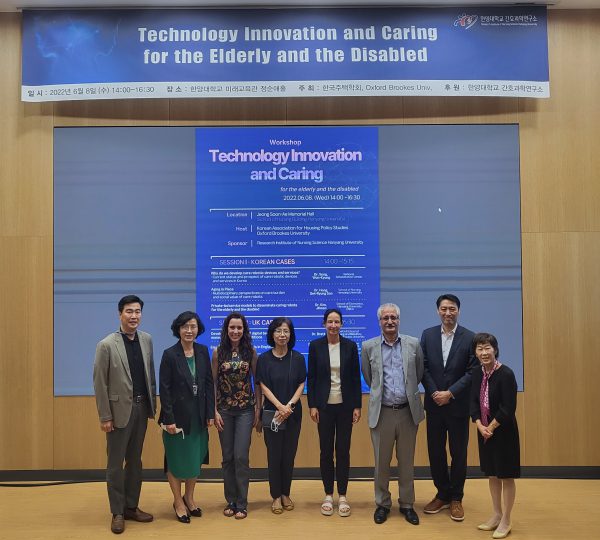UK and South Korea Homecare: differences and similarities
During a research network visit to Seoul, Dr Karla Zimpel-Leal from Oxford Brookes Business School (UK) shared her insights into the emergent models of homecare in England and learned about Korean homecare. Drawing on her former publication ‘Emergent homecare models are shaping care in England: an ethnographic study of four distinct homecare models’ at Advances in Health Care Management (2021), Karla gave consideration to the distinct implications that these models have on the care market and the care workforce.

For example, platform-based models, also known as “uberisation” models, offer a two-sided market with network effect, with one side consisting of care workers, and the other side the care recipients. In other words, in two-sided markets with network effects, the value that a consumer (care workers) derives from joining a platform is determined by the number of consumers (care recipients) on the other side. Hence, the more users in the network, the more value it adds for both sides. The pros of such model is that it can create a powerful customer experience, while staying responsive to the peaks and lows of demands. In the homecare context, this kind of platform model also has potential downsides such as zero hours contract for care workers and potential flaws related to due diligence regarding work conditions and safety for both sides of the network. Another example of homecare model in England is self-managed care team, represented in the UK by organisations such as Buurtzorg, Bellevie and Wellbeing Teams . This model offers continuity of care based on outcomes for care recipients and a recruitment of workforce using a value-based approach.
In South Korea the use of assistive mobile robot has been playing a big role to support older adults and people with disabilities to live safely and more independently at home. One of the homecare mobile robots for social interaction is Social Robot, which provides a practical interaction robotic solution to improve the quality of life of elderly people. Care robots are able to communicate with a control tower to let their supervisor know about an abnormal situation. They are based on AI and big data technology so that they can study and learn human behaviours and provide personalised care. These smart robots are based on massive datasets that can verbally communicate with older adults and monitor their movements.
Although these models seem disparate, they have something in common. That is, they follow the Ageing in Place (AIP) philosophy, which is defined as the ability to live in one’s own home and community safely, independently, and comfortably, regardless of age, income, or ability level. Being at home is more than occupying a physically familiar space, i.e., the same house. It’s related to a sense of identity both through independence and autonomy and through caring relationships and roles in the community and places people live. One of the challenges for AIP is that we have to think more deeply on the psychosocial aspect of ageing. In most cases, homecare requires coordinate activities from an interdisciplinary team that may include carers, nurses, physicians, occupational therapists and so on. In addition, home visits may reveal new problems, such as use of multiple drugs, geriatric nutrition, depression, loneliness, and unhealthy lifestyle. Similarly, to the UK and South Korea, the most countries across the world find themselves in a similar situation of facing care-related problems in a rapidly ageing society. The continuous improvement of care is directly related to our mission as researchers to learn from failure and success cases and various government policies. Sharing knowledge and best practices across nations and disciplines is one way to support ageing well in place.